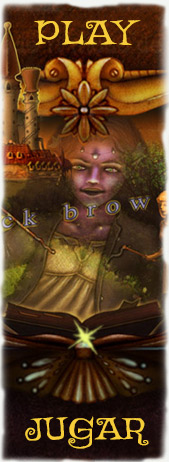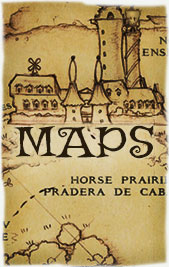Writing Analysis: Elven Lords and City of Terrors for T&T

In my last post, I reviewed the Tunnels and Trolls Solo Design Guidelines: How to Write A Solo Adventure, which was written mostly by Michael Stackpole many years ago. The most useful takeaway from that PDF was to make a flowchart.
Over the Christmas holiday, I completely played through a couple of the best adventures for T&T—Elven Lords (Deluxe) and City of Terrors (Deluxe), both authored originally by Michael Stackpole. I flowcharted them as I went, per his adventure writing advice. (See example image.)
So this blog post is a writing analysis of Elven Lords and City of Terrors. Both of these were the most recent deluxe versions purchased from DriveThruRPG.com, and they are chock full of beautiful artwork from my favorite pen and ink fantasy illustrators, Liz Danforth and Rob Carver.
I’ll go over Elven Lords pros and cons, then City of Terrors pros and cons, then finally sum up with some takeaways to use in my own adventure writing. Hopefully!
Elven Lords (1987)
First the negatives.
- Author/reader contract failed. Don’t buy this module looking for elves. It’s like they had to pick a title, so they chose the one elf scenario. So there was a failure to live up to the author/reader unspoken contract. This is a thing in fiction. Readers expect to be paid off for taking the time to read, and a book title and cover make promises.
- Characters. I mentioned the lack of advice from Stackpole on this topic in my previous blog post. He doesn’t mention characters at all in his guide. Elven Lords is consistent with this weakness. Some important characters have no names in this module (or weak ones like Mr. Big), including the titular elves.
- Paths are too short. Stackpole tried to live up to his stated goal of 30+ endings. Turns out many of those are far too short. City of Terrors is designed better, because short episodes loop you back to the hub, where you can hunt for the longer stories.
- Moral decisions with no clues. A frequent shortfall of T&T modules seems to be giving you decisions that are just plain random. Pick one door. Good luck! I really feel like something to go on is worth the effort and words, even if it amounts to nothing.
- Unbalanced rewards. Final boss fight ended with no conversation or ceremony, same XP as any other storyline.
- Stackpole is revisiting Gull, but it isn’t as good. Elven Lords is set in the same city as the City of Terrors module published years earlier. As an artist/writer, I have to assume Stackpole wanted to improve on his original effort. (I would.) The question is why? Or was he just writing a sequel for the money, and, well, it’s a sequel. Maybe it’s as simple as that.
A list of positives next.
- Some saving rolls are blind, some not. Sometimes you know how hard something is before you try, other times you are surprised. This a realistic way of handling SR’s.
- Choice of attributes to roll against. Solving a puzzle with your luck vs. your agility, for example.
- Saving rolls are consistent with adventure themes. If you choose a roguish path, you get more agility and luck situations. If you choose a scholarly path, you get some INT rolls. Solid design.
- Start a scene with a mini-mystery hook. Once or twice, the text mentions something very strange in a scene right away, which makes you wonder what it’s about, but you have to read on for some paragraphs to find out. This was very effective. This is also a contract! You’d better pay off the reader.
- Superlative art as a reward. In a few cases, an important scene has gorgeous art. This could be seen as a payoff. Big budget video games do this today with spectacular cut scenes for example. It’s just not something you normally think of as a reward.
- Meta paths. Elven Lords has outstanding design in terms of short paths unlocking longer, more important storylines. Unfortunately the dead end paths really needed to loop around like in CoT.
- Final boss. In a few T&T modules, there seems to be a concept of a final boss (even way back 40 years ago.) This seems effective.
City of Terrors (1978)
Negatives first.
- Cover Art. I don’t like the colored cover. It sucks compared to the original line art back in the day. Sorry, I just needed to get that off my breast plate!
- Number/letter system. I like the numbers better than the number/letter combos for various reasons.
- Incorrect use of the verbs Lie and Lay. Come on, guys. Laying in bed is not a thing (also one instance of this in Elven Lords— ‘You lay low and…’)
- A missing page. Page 12. I was unable to go to 12B from 56B.
- Moral options don’t have clues. See above with Elven Lords. There are some situations where your pick turned out to be moral, but it was totally random. You had no chance to choose correctly. I don’t like that.
That’s it. That’s all the negatives for City of Terrors. The positives for City of Terrors mostly mirror the design takeaways for this blog post. So I’ll just go right into them.
Adventure writing insights from T&T modules:
- Illustrations show action. This was design advice in an Amazon prime documentary I watched recently, featuring the greatest old school fantasy art painters. Make fantasy art with action happening. The concept is working here. The trick is that T&T has the style of showing a random adventurer dying, or whatever. You sort of have to go all-in on that style of presentation, and it might not appeal to most today. I’m just used to seeing it due to T&T.
- Short paths loop, long paths end the adventure exclusively. I like looping back to a road, instead of the adventure just ending. The optimal adventure design, I think, would be for all short and medium adventure paths to loop back to the beginning. The only true exits are by boat (i.e. voluntarily quitting from the main hub), or an exclusive long story line finale. There are only a few story finales, and you can only complete one. After that, you can’t run the adventure again.
- Mixed telegraphed and blind roll difficulties. So, in some cases you know how hard something will be (climbing a pillar). In other cases, you don’t know until you go through the door or whatever, in which case the saving roll will be blind.
- Permanent attribute losses as a penalty for failure. Maybe your foot got caught in a trap and maimed. Permanent loss of DEX. Or you were burned in a fire. Loss of CHR. This is a solid idea. It’s not instant death, but the player will have to decide whether to start over regardless.
- The gods are not pleased. This was an interesting ‘thing’. If you’re a coward, the gods curse you, basically. I’m a big fan of divine powers in fantasy settings. It expands the universe, the feeling of magic and enchantment, basically everything without much drawback. The Temple of the Beetle in CoT brings in this aspect, which is missing from Elven Lords.
- Places to rest. There is a healer shop in CoT. I was not rolling dice or doing any combats, but surely adventurers get worn down. Or are you supposed to heal between every combat? In any case, I think more opportunities to rest along the adventure and gain a bonus or healing would be an immersive thing.
- Options have agency and roleplay. Other T&T modules are boring because options are very, very dull. “Go east?” “Go southeast” “Go down?” Etc. etc. Stackpole warned about this in his designing advice, and implemented choices that allow you to roleplay your character (if you’re a rogue, you can sneak in the back.. etc..) This is kind of obvious.
- Sex. City of Terrors has as much or more than any other officially published T&T module (I believe. I don’t own literally all of them.) Elven Lords had some hard drug scenarios, where you can run drugs for example, but those were pretty eh.
So. Sex. Stackpole warns against sex in his design guide, citing the importance of writing for all ages, but then he writes sex scenes? Since this is a big question in my own adventure writing, I wrote down examples from these T&T modules.
I feel like I want the classic, Age of Conan experience with handsome, bare-chested studs and wenches. I’m concerned about criticism, since I also want my game to be educational, but I also want to do what I want. The game has mature themes. That’s the Fey/Underworld setting.
By the way, I’m 100% committed to gender equality in Elven Academy. Literally if there is a ‘scantily clad’ (cringe) woman, there is also a scantily clad male to roughly the same degree.
If you can sleep with a female dwarf, you can also have the chance to sleep with a male ogre, for example, somewhere.
In any case, here are the cringy classic “sexcerpts” I found for future reference. I’m interested in the standards for erotic suggestiveness in fantasy fiction today. The popular stuff on the bookshelves.
I also clipped the associated artworks in these modules showing partial nudity, but I decided not to post those. I don’t want to anger the gods. You’ll just have to check out the modules for yourself.
Elven Lords
196 Since this is a family publication, we’re going to be a bit delicate here. As much as you would like to deny any desire to be there, you actually are curious (…) At the end of your service, you’re released into the world, maybe a little bit wiser, and definitely a whole lot sorer.
240 The book you pluck off the shelves is a lusty old romance tome entitled “I Was the Death Empress’ Love Slave”.
City of Terrors
40C If you want to make love to her, go to 50E.
46A You feel her reaching for you and moaning softly. She calls for you to make love to her. (If no, you are admonished for leaving a woman in need.)
50E It takes a real degenerate to proposition an old lady … She makes love to you after she casts a modified Bigger is Better spell on you.
1C You find she is an amorous lover. It is one of your greatest experiences. As you lay panting, she advances again.
37C You find the Sheik’s brother in bed with a beautiful woman (with illustration).
Thanks for reading, and happy gaming. Feel free to leave a comment.

